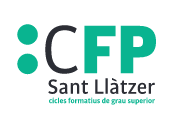Conversation analysis can help to distinguish between epilepsy and non-epileptic seizure disorders (Record no. 43511)
[ view plain ]
| 000 -CABECERA | |
|---|---|
| campo de control de longitud fija | 02148 ab a2200241 4500 |
| 001 - NÚMERO DE CONTROL | |
| campo de control | 46615 |
| 005 - FECHA Y HORA DE LA ÚLTIMA TRANSACCIÓN | |
| campo de control | 20170306203416.0 |
| 008 - DATOS DE LONGITUD FIJA--INFORMACIÓN GENERAL | |
| campo de control de longitud fija | 950727s2009 sp bc s001 0 eng |
| 041 ## - CÓDIGO DE LENGUA | |
| Código de lengua del texto/banda sonora o título independiente | |
| 093 ## - Data entradad del registre | |
| Data entrada | 10/03/2015 |
| 100 ## - ENTRADA PRINCIPAL--NOMBRE DE PERSONA | |
| Nombre de persona | Plug L. |
| 9 (RLIN) | 45438 |
| 245 ## - MENCIÓN DE TÍTULO | |
| Título | Conversation analysis can help to distinguish between epilepsy and non-epileptic seizure disorders |
| Resto del título | A case comparison/ |
| Mención de responsabilidad, etc. | Plug, Leendert; Sharrack, Basil; Reuber, Markus |
| 337 ## - TIPO DE MEDIO | |
| Nombre/término del tipo de medio | Article |
| 340 ## - MEDIO FÍSICO | |
| Base y configuración del material | Document electrònic |
| 520 ## - SUMARIO, ETC. | |
| Sumario, etc. | Purpose: Factual items in patients histories are of limited discriminating value in the differential using a transcript-based sociolinguistic research method inspired by Conversation Analysis (CA) suggest that it is helpful to focus on how patients talk. Previous reports communicated these findings by using particularly clear examples of diagnostically relevant interactional, linguistic and topical features from different patients. They did not discuss the sequential display of different features although this is crucially important from a conversation analytic point of view. This case comparison aims to show clinicians how the discriminating features are displayed by individual patients over the course of a clinical encounter. doctorpatient encounters by a made by the recording of a of seizures. The NES patient exhibited resistance to focusing on individual seizure episodes and only provided a detailed seizure description after repeated prompting towards the end of the interview. Although both patients also displayed some linguistic features favouring the alternative diagnosis, the linguists final diagnostic hypothesis matched the diagnosis made by video-EEG in both cases. patients share information with the doctor. It supports the notion that close attention to how patients communicate can help in the differential diagnosis of seizures. |
| 650 ## - PUNTO DE ACCESO ADICIONAL DE MATERIA--TÉRMINO DE MATERIA | |
| Término de materia o nombre geográfico como elemento de entrada | Epilèpsia |
| 9 (RLIN) | 59934 |
| 650 ## - PUNTO DE ACCESO ADICIONAL DE MATERIA--TÉRMINO DE MATERIA | |
| Término de materia o nombre geográfico como elemento de entrada | Estudi |
| 9 (RLIN) | 60030 |
| 700 ## - PUNTO DE ACCESO ADICIONAL--NOMBRE DE PERSONA | |
| Nombre de persona | Sharrack B. |
| 9 (RLIN) | 52042 |
| 700 ## - PUNTO DE ACCESO ADICIONAL--NOMBRE DE PERSONA | |
| Nombre de persona | Reuber M. |
| 9 (RLIN) | 47363 |
| 773 ## - ENLACE AL DOCUMENTO FUENTE/ENTRADA DE REGISTRO ANFITRIÓN | |
| Título | Seizure |
| Parte(s) relacionada(s) | 2009; 18: 43-50 |
| 990 ## - Archivo Asociado | |
| -- | Articles_pdf\ART-281.pdf |
| 992 ## - | |
| -- | \\nassrv\z_doc6 |
| -- | Articles_pdf\ART-281.pdf |
| Estado de retiro | Estado de pérdida | Fuente del sistema de clasificación o colocación | Estado dañado | Restricciones de uso | No para préstamo | Código de colección | Localización permanente | Ubicación/localización actual | Ubicación en estantería | Fecha de adquisición | Total de préstamos | Signatura topográfica completa | Código de barras | Precio válido a partir de | Tipo de ítem Koha |
|---|---|---|---|---|---|---|---|---|---|---|---|---|---|---|---|
| Universal Decimal Classification | Inventari - ocult | Exclòs de préstec | Fitxer informàtic | Escola Universitària d'Infermeria i Teràpia Ocupacional de Terrassa | Escola Universitària d'Infermeria i Teràpia Ocupacional de Terrassa | Biblioteca | 24.02.2016 | ART-281 | 0000003370971 | 24.02.2016 | Journal article |


